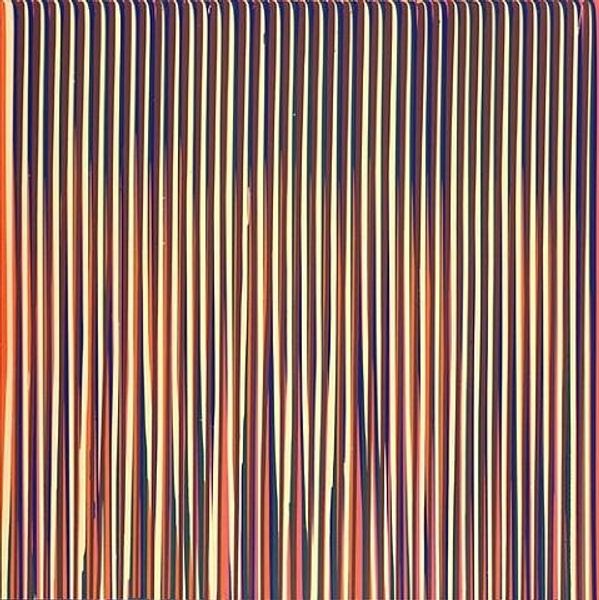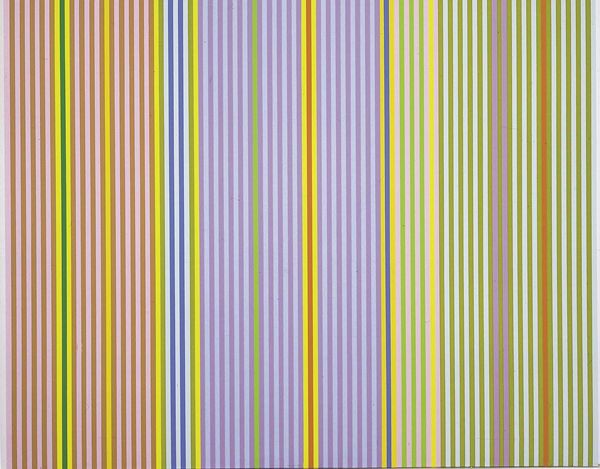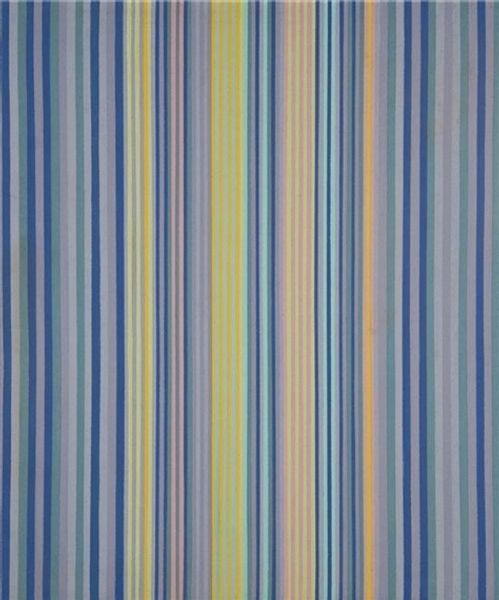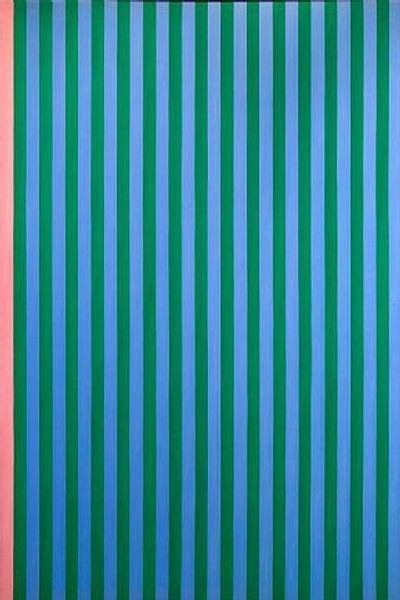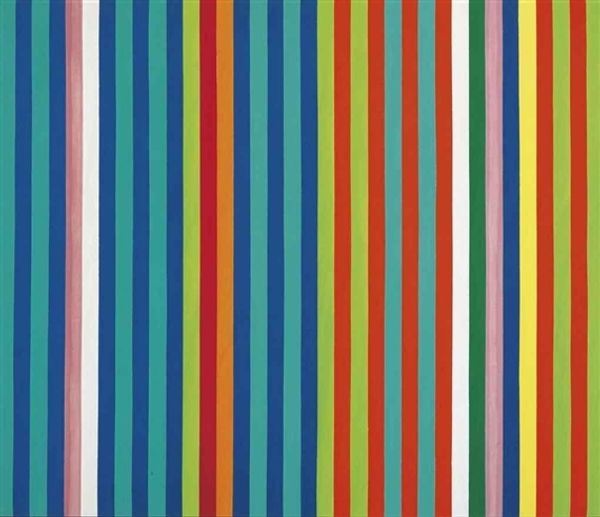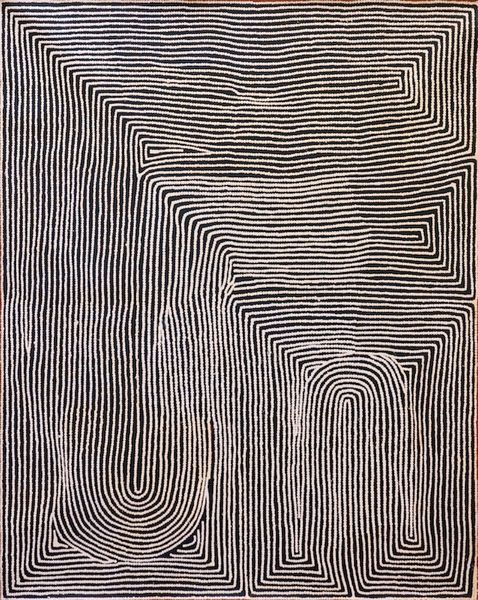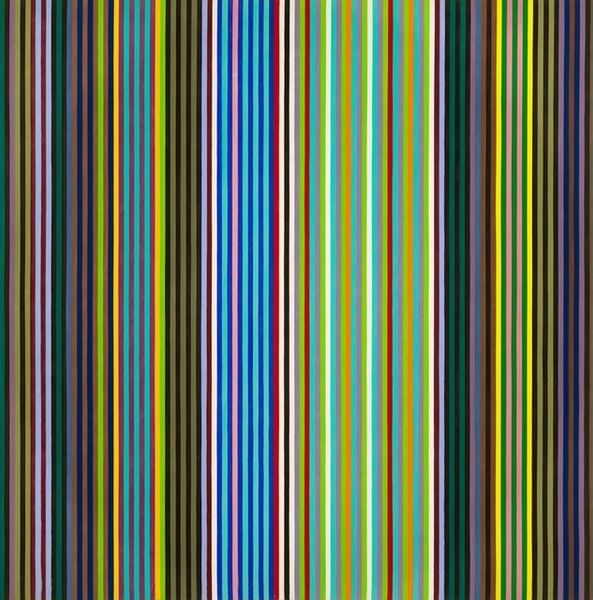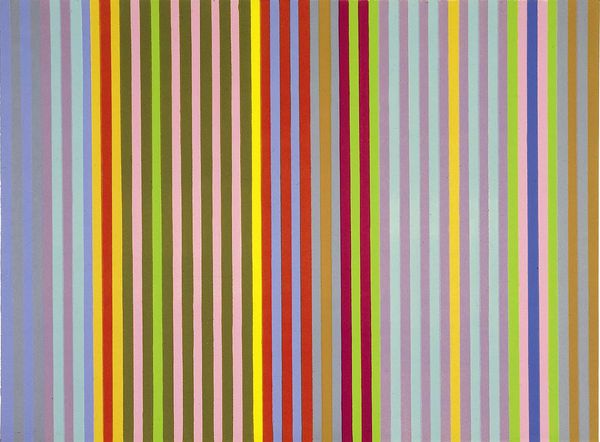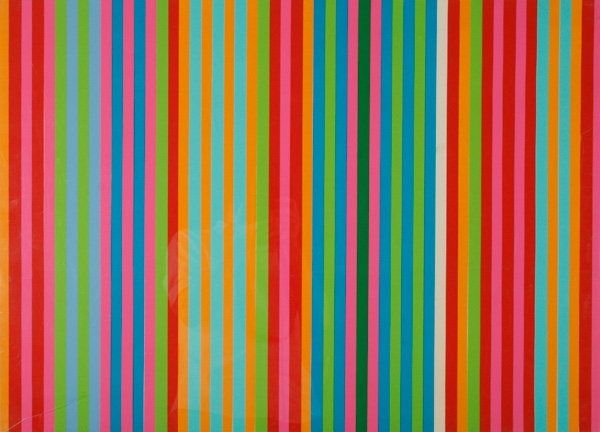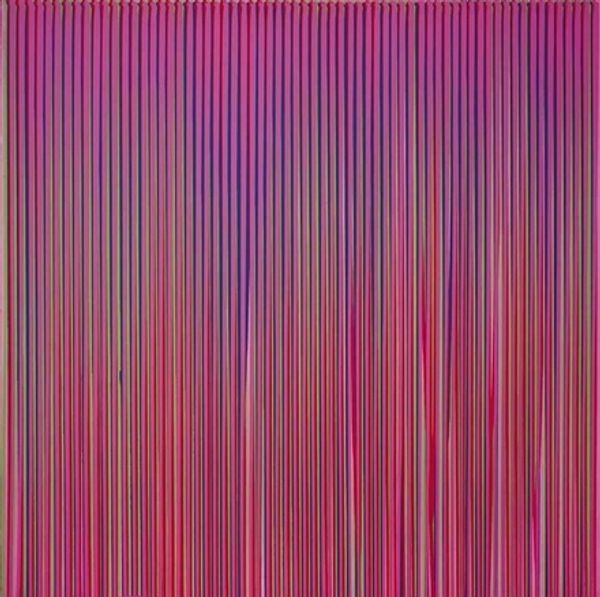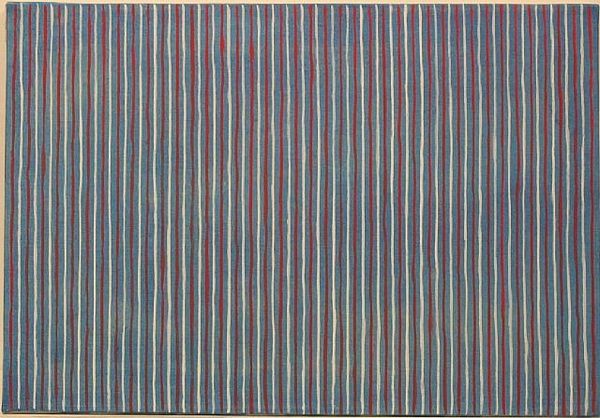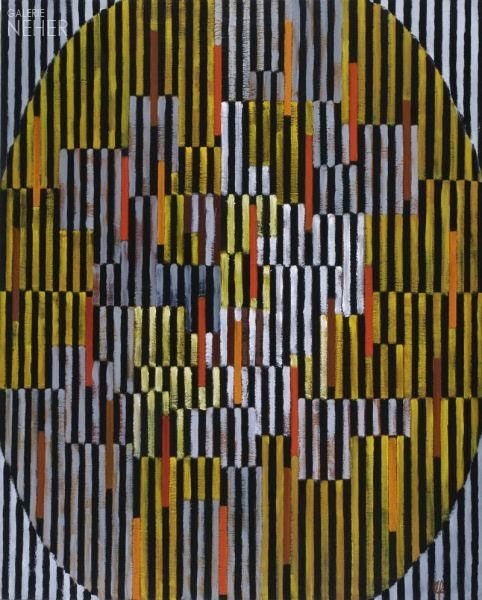
painting
#
painting
#
minimalism
#
linear pattern
#
abstract-art
#
abstraction
#
line
#
abstract art
Copyright: Ian Davenport,Fair Use
Curator: At first glance, Ian Davenport's "Untitled" from 1995 presents itself as a remarkably simple composition, but, trust me, that’s only if you don't dig in. What’s your initial impression? Editor: My impression is one of elegant, controlled chaos. The lines are uniform in their descent, but the subtle shifts in tone and width introduce an element of unpredictability that's very engaging. Curator: Exactly. Thinking about the historical context of its creation, during the mid-90s, Davenport's experimentation with poured paint disrupted the prevailing notions about minimalist painting—considering the gallery systems that were championing a stark style in response to prior artistic movements. He wasn't just making abstract paintings, but also questioning the means by which painting was being critically and economically valued. Editor: That’s a critical observation. How does his technique specifically address those considerations, that socio-political push-pull in the art world? Curator: By emphasizing process. Each line is the result of carefully pouring paint down a tilted surface, allowing gravity and viscosity to determine the outcome. He foregrounds labor. And, that act directly challenges any hierarchical distinction between “high” art and the more humble origins of ‘craft’ by celebrating the act of making. It also emphasizes materiality – it's very clearly, demonstrably, paint. Editor: I find that particularly resonant. It draws our attention to the very substance of the artwork – the paint, the way it behaves. In a way, he’s subverting expectations and inviting viewers to question what constitutes art in an institutionalized context. And what is valuable! The role of galleries at the time, the discourse... It’s hard not to think about that now, looking at the pattern. Curator: Precisely. Its reception back then provoked questions about consumption and worth within the system, questions that honestly, in a market context, continue to hold relevance today. The repetitive nature mimics industrial processes yet embraces accidental variation. Editor: Well, this work presents itself as a very thought-provoking interplay between structure and chance, materiality and concept. I hadn't considered its critique of institutional art before, and I find that perspective enriching. Curator: Right? Next time you’re considering a Pollock or a Rothko, consider Davenport's contribution to expanding the ways to look at non-objective works.
Comments
No comments
Be the first to comment and join the conversation on the ultimate creative platform.
